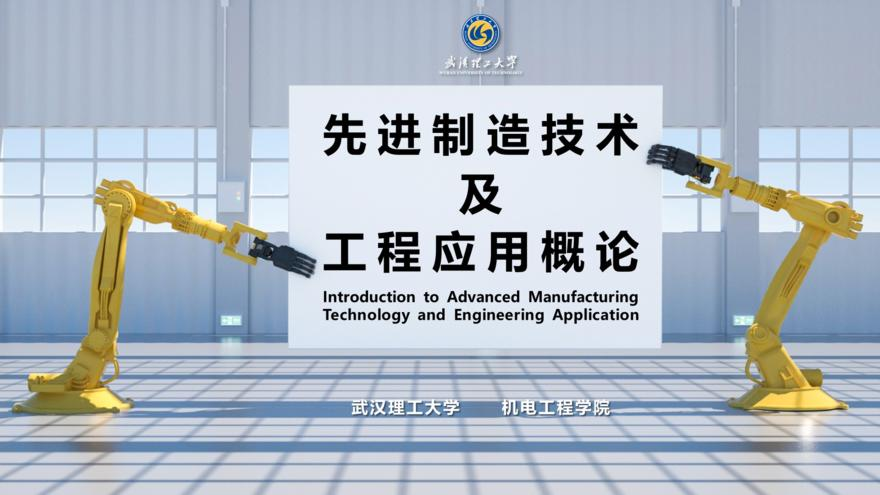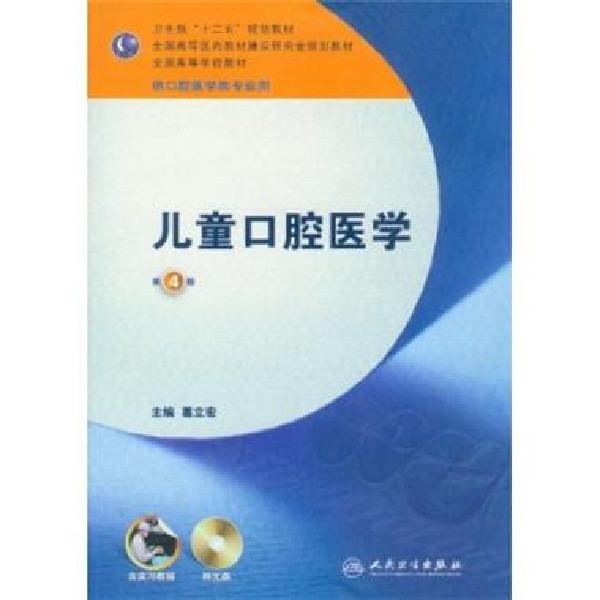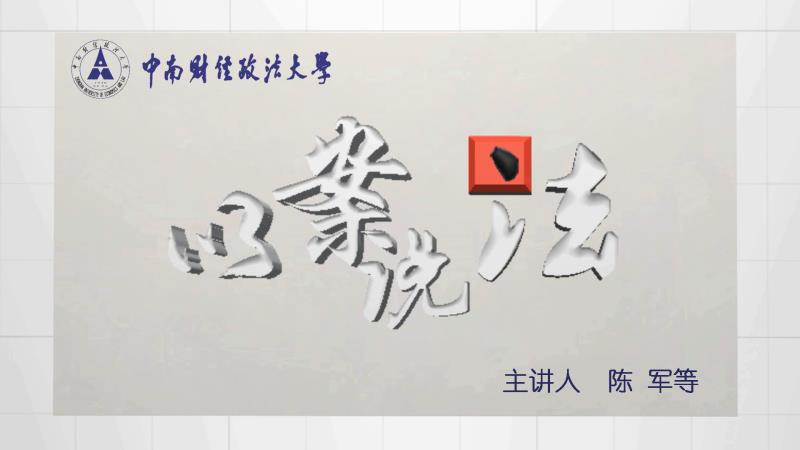
Mechanics of Materials课程:前往报名学习
Mechanics of Materials is a compulsory course for most undergraduate programs. It is an important prerequisite course for subsequent professional studies. The course offered by DUT is awarded both excellent courses of Liaoning Province and International Students Learning in China. All instructors have rich experiences of teaching, and are well recognized for their teaching effect.
开设学校:大连理工大学;学科:理学、
Mechanics of Materials is a compulsory course for most undergraduate programs. It is an important prerequisite course for subsequent professional studies. The course offered by DUT is awarded both excellent courses of Liaoning Province and International Students Learning in China. All instructors have rich experiences of teaching, and are well recognized for their teaching effect.
-1.1 Introduction
-1.2 Equilibrium of a Deformable Body
--1.2.3 Problem Discussion 1_Statics
--1.2.4 Problem Discussion 2_Statics
--1.2.5 Problem Discussion 3_Statics
-1. Exercise
--1. Exercise
-1. Homework
--1.Homework
-1.3 Stress
-1,4 Average Normal Stress in Axially Loaded Member
--1.4.2 Average Normal Stress in Axially Loaded Member
--1.4.3 Problem Discussion 1_Axial Force Diagram
--1.4.4 Problem Discussion 2_Average Normal Stress
-2. Exercise
--2. Exercise
-2. Homework
--2. Homework
-1.5 Average Shear Stress
--1.5.2 Problem Discussion_Average shear stress
-1.6 Allowable Stress
--1.6.2 Problem Discussion_Allowable stress
-1.7 Design of Simple Connections
--1.7.1 Design of Simple Connections
--1.7.2 Problem Discussion_Design of connections
-3. Exercise
--3. Exercise
-3. Homework
--3. Homework
-2 Strain
--2.1.2 Problem Discussion_Strain
-3 Mechanical Properties of Materials
--3.1.1 Low Carbon Steel in Tension
--3.2.1 Mechanical Properties of Materials
- Experiment Video_1
--1. Low Carbon Steel in Tension
- Experiment Video_2
-4. Exercise
--4. Exercise
-4. Homework
--4. Homework
-Unit Test_1
-3.6 Poisson’s Ratio
-3.7 Problem Discussion_strength
--3.7.1 Problem Discussion_Strength
-4.1 Saint-Venant’s Principle
--4.1.1 Saint-Venant’s Principle
-4.2 Elastic Deformation of an Axially Loaded Member
--4.2.1 Elastic Deformation of an Axially Loaded Member
--4.2.2 Problem Discussion_Elastic Deformation
--4.2.3 Problem Discussion_Displacement Calculation
-5. Exercise
--5. Exercise
-5. Homework
--5. Homework
-4.2 Displacement Calculation_Energy Method
--4.2.1 Elastic Deformation( Energy Method)
-4.3 Principle of Superposition
--4.3.1 Principle of Superposition
-4.4 Statically Indeterminate Axially Loaded Member
--4.4.1 Statically Indeterminate Axially Loaded Member
-6. Exercise
--6. Exercise
-6. Homework
--6. Homework
-4.5 The Force Method of Analysys for Axially Loaded Member
--4.5.2 Problem Discussion_Assembling Stress
-4.6 Thermal Stress
--4.6.2 Problem Discussion 1_ Thermal stress
--4.6.3 Problem Discussion 2_Thermal stress
-7. Exercise
--7. Exercise
-7. Homework
--7. Homework
-Unit Test_2
-4.7 Stress Concentration
-5.1 Torsional Deformation of a Circular Shaft
--5.1.1 Torsional Deformation of a Circular Shaft
--5.1.2 Problem Discussion_Torque Diagram
-5.2 The Torsion Formula
--5.2.2 Problem Discussion_The Torsion Formula
--5.2.3 Problem Discussion_Torsional Strength
-8. Exercise
--8. Exercise
-8. Homework
--8. Homework
-5.3 Power Transmission
-5.4 Angle of Twist
-5.5 Statically Indeterminate Torque Loaded Members
--5.5.1 Statically Indeterminate Torque Loaded Members
-5.6 Strain Energy in Torsion & Noncircular Shaft
--5.6.1 Strain Energy in Torsion & Noncircular Shaft
-Experiment Video_3
-9. Exercise
--9. Exercise
-9. Homework
--9. Homework
-Examination_Chapter 5
-A.1 Centriod of an Area
-A.2 Moment of Inertia for an Area
--A.2.1 Moment of Inertia for an Area
-A.3 Product of Inertia for an Area
--A.3.1 Product of Inertia for an Area
-10. Exercise
--10. Exercise
-10 Homework
--10. Homework
-A.3 Composite Area
-A.4 Moment of Inertia for an Area about Inclined Axes
--A.4.1 Moment of Inertia for an Area about Inclined Axes
--A.4.2 Problem Discussion_Moment of Inertia for an Area about Inclined Axes
-11. Exercise
--11. Exercise
-11. Homework
--11.Homework
-Unit Test 4
-6.1 Introduction of Bending
--6.1.1 Introduction of Bending
--6.1.2 Shear and Moment at Appointed Section
--6.1.3 Problem Discussion_Shear and Moment at Appointed Section
--6.1.4 Shear and Moment Diagrams
-12. Exercise
--12. Exercise
-12. Homework
--12. Homework
-6.2 Graphical Method for Constructing Shear and Moment Diagrams_1
--6.2.1 Graphical Method for Constructing Shear and Moment Diagrams
--6.2.2 Problem Discussion (1)_Graphical method
--6.2.3 Problem Discussion (2)_Graphical method
--6.2.4 Problem Discussion (3)_Graphical method
-13. Exercise
--13. Exercise
-13. Homework
--13. Homework
-6.2 Graphical Method for Constructing Shear and Moment Diagrams_2
--6.2.5 Problem Discussion (4)_Graphical method
--6.2.6 Problem Discussion (5)_Graphical method
--6.2.7 Construction of Moment Diagram by Principle of Superposition
--6.2.8 Internal Loading Diagrams of Inclined or Curved Beams
--6.2.9 Internal Loading Diagrams of Frames
-14. Exercise
--14. Exercise
-14. Homework
--14. Homework
-6.3 Bending Deformation of a Straight Member
--6.3.1 Bending Deformation of a Straight Member
-6.4 The Flexure Formula
--6.4.2 The Flexure Formula_Transverse Bending
--6.4.3 Problem Discussion_Normal stress in a beam
-15. Exercise
--15. Exercise
-15. Homework
--15. Homework
-15. Discussion
-Unit Test 5
-6.5 Unsymmetric Bending
--6.5.2 Problem Discussion 1_ Unsymmetric Bending
--6.5.3 Problem Discussion 2_ Unsymmetric Bending
-16. Exercise
--16. Exercise
-16. Homework
--16. Homework
-16. Discussion
-7.1&7.2 The Shear Formula
-7.3 Shear Stresses in Beams
--7.3.1 Shear Stresses in Beams
--7.3.2 Problem Discussion 1_ Shear Stresses in Beams
--7.3.3 Problem Discussion 2_Shear Stresses in Beams
-17. Exercise
--17. Exercise
-17. Homework
--17. Homework
-17. Discussion
-7.4 Shear Flow in Built-up Members
--7.4.1 Shear Flow in Built-up Members
-7.5 Shear Flow in Thin-Walled Members
--7.5.1 Shear Flow in Thin-Walled Members
--7.5.2 Problem Discussion _ Bending strength
-18. Exercise
--18. Exercise
-18. Homework
--18. Homework
-18. Discussion
-Unit Test_6
-8.1 Introduction of Combined Loadings
--8.1.1 Introduction of Combined Loadings
-8.2 State of Stress Caused by Combined Loadings
--8.2.1 State of Stress Caused by Combined Loadings
--8.2.2 Problem Discussion _ Eccentric Tension & Compression
-19. Exercise
--19. Exercise
-19. Homework
--19. Homework
-19. Discussion
-9.1-9.2 General Equations of Plane--Stress Transformation
--9.1-9.2.1 General Equations of Plane-Stress Transformation
-9.3 Principle Stresses and Maximum In-Plane Shear
--9.3.1 Principle Stresses and Maximum In-Plane Shear
--9.3.2 Problem Discussion_Plane-stress transformation
-20. Exercise
--20. Exercise
-20. Homework
--20. Homework
-20. Discussion
-9.4 Mohr's Circle —Plane Stress
--9.4.1 Mohr's Circle —Plane Stress
-9.5 Stress in Shafts Due to Axial Load and Torsion
--9.5.1 Stress in Shafts Due to Axial Load and Torsion
--9.5.2 Problem Discussion _ Stress Transformation
-21. Exercise
--21. Exercise
-21. Homework
--21. Homework
-21. Discussion
-9.7 Absolute Maximum Shear Stress
--9.7.1 Absolute Maximum Shear Stress
-10.6 Material-Property Relationships
--10.6.1 Material-Property Relationships
-22. Exercise
--22. Exercise
-22. Homework
--22. Homework
-22. Discussion
-10.7 Theories of Failure
--10.7.2 Problem Discussion 1_ Theories of failure
--10.7.3 Problem Discussion 2 _ Theories of failure
-23. Exercise
--23. Exercise
-23. Homework
--23. Homework
-23. Discussion
-Unit Test_7
-11 Design of Beams
-12.1 The Elastic Curve
-12.2 Slope and Displacement by Integration
--12.2.1 Slope and Displacement by Integration
--12.2.2 Problem Discussion _Slope and displacement by integration
-24. Exercise
--24. Exercise
-24. Homework
--24. Homework
-24. Discussion
-12.5 Method of Superposition
--12.5.1 Method of Superposition
--12.5.2 Slope and Deflection by Energy Method
-12.9 Statically Indeterminate Beam and Shaft —Method of superposition
--12.9.1 Statically Indeterminate Beam and Shaft —Method of superposition
--12.9.2 Improvement of the Stiffness of a Beam
-25. Exercise
--25. Exercise
-25. Homework
--25. Homework
-25. Discussion
-Unit Test _8
-13.1 Critical Load
-13.2 Ideal Column with Pin Support
--13.2.1 Ideal Column with Pin Support
-13.3 Columns Having Various Types of Supports
--13.3.1 Columns Having Various Types of Supports
--13.3.2 Problem Discussion_ Critical Load
-26. Exercise
--26. Exercise
-26. Homework
--26. Homework
-26. Discussion
-13.4 Critical Stress
-13.5 Design of Columns
-27. Exercise
--27. Exercise
-27. Homework
--27. Homework
-27. Discussion
-Unit Test 9
-Final Exam
黄丽华,大连理工大学建设工程学部教授,工程力学研究所所长,辽宁省教学团队“工程力学”主要成员,辽宁省精品课程“工程力学”课程主要完成人。主讲过理论力学(中英文)、材料力学(中英文)、工程力学、高等材料力学等课程。曾获宝钢教育基金优秀教师奖,辽宁省优秀青年骨干教师,大连理工大学教学名师,教学质量优秀奖等荣誉。 她主持省部及校级教改项目20余项,她带领团队多次获省部及校级教学成果奖。主编教材5部,发表教学、科研论文60余篇。


